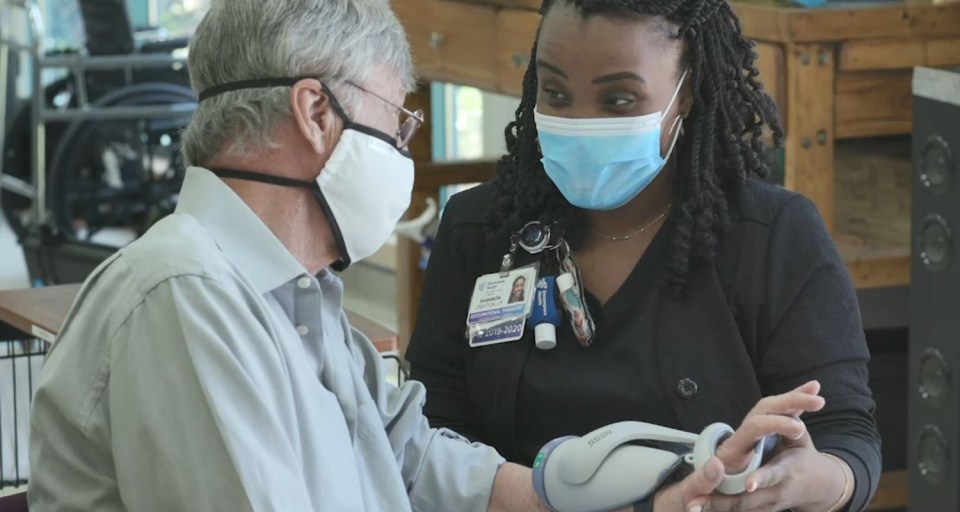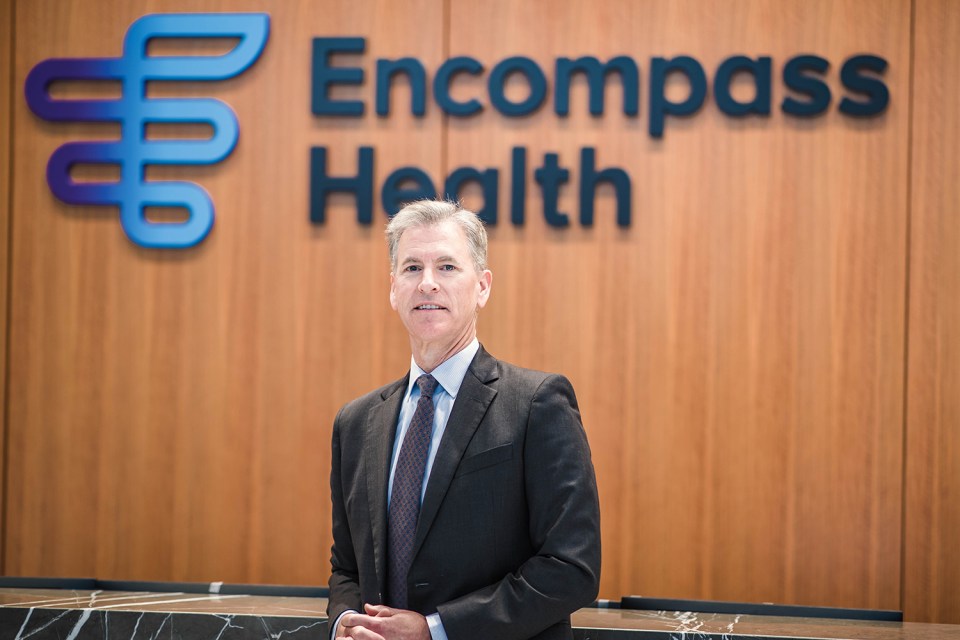Encompass Health started the first half of 2019 strong, continuing to grow its national footprint and offer innovative post-acute solutions.
That is one of several key points Mark Tarr, Encompass Health president and CEO, will drive home at the upcoming Baird Global and Wells Fargo Healthcare conferences.
Set for Sept. 4 and 5, both conferences bring together some of the nation’s leading healthcare companies and allow customized meetings with their top executives and the investment community.
Encompass Health is a leading provider in integrated healthcare services with more than 130 inpatient rehabilitation hospitals and over 300 home health and hospice locations nationwide and in Puerto Rico.
In addition to highlighting the Company’s successes during the first half of 2019, Tarr will discuss regulatory changes impacting both its business segments, which he said Encompass Health is well positioned and prepared to adapt to.
The solid results of the first half of 2019 reflect the strength and sustainability of the Company’s business model—a model that is backed by favorable demographic trends, as the population continues to age and need the services Encompass Health provides.
The following are a few takeaways from Encompass Health’s successes during the first half of 2019, and what’s to come:
- Robust growth continues in both segments
Encompass Health continues to be an industry leader in successfully navigating the frequently complex waters of state regulatory agencies to obtain certificates of need for new hospitals.
So far this year, it’s already opened two inpatient rehabilitation hospitals, one in Lubbock, Texas, and another in Boise, Idaho. Two more inpatient rehabilitation hospitals will open in Katy, Texas and Murrieta, California by end of year.
The Company has additional hospitals opening in 2020, including previously announced hospitals in Sioux Falls, South Dakota; Coralville, Iowa; and Cumming, Georgia. The Company recently announced plans for new hospitals in Tampa Bay, Florida and Henry County, Georgia that will open in 2021.
In its home health and hospice segment, the Company acquired Alacare in July, adding 23 home health and 23 hospice locations to its portfolio. With more than 80 hospice locations nationwide, Encompass Health is one of the top 10 providers of hospice care, and with 245 home health locations, it is the nation’s fourth largest home health provider.
- Clinical collaboration rates are climbing
One of the key areas of the Company’s strategy is to create overlap markets to coordinate care between its inpatient rehabilitation hospitals and home health locations. Following the Alacare acquisition, the Company has 86 overlap markets, which refers to markets that have both an Encompass Health hospital and home health location within an approximate 30-mile radius. The Company has developed a standardized approach to prepare a patient as they discharge and transition to home care in these overlap markets, resulting in higher discharges to the home and less hospital readmissions—both of which lead to improved patient satisfaction. The current clinical collaboration rate in overlap markets is approximately 35 percent, with a near-term goal of 40 percent.
- Continued focus on meeting the needs of patients recovering from strokes
An estimated 800,000 people will have a stroke this year, and of those survivors, many could benefit from inpatient rehabilitation. The American Heart/American Stroke Association concluded that inpatient rehabilitation is a better setting for treating stroke patients, and with 117 of Encompass Health’s inpatient rehabilitation hospitals holding stroke-specific certifications through The Joint Commission, Encompass Health is well positioned to serve this patient population.
This year, the Company also joined forces with the American Heart Association/American Stroke Association as a three-year strategic sponsor of “Together to End Stroke,” with the goal of spreading the message that not only is stroke treatable, it’s also beatable through prevention and education. The Company will implement this by developing patient and caregiver education resources and sponsoring 20 Go Red for Women luncheon events across the country.
Efforts to reach these patients are working. The number of stroke patients Encompass Health treats continues to increase, with a three-year CAGR for all stroke patients of approximately 6 percent.
- Continued progress in development of post-acute solutions
Encompass Health continues to lead the way in post-acute innovation through its development of predictive models and post-acute solutions to improve outcomes and efficiencies throughout the continuum of care.
Nearly a decade ago, Company leadership decided to invest in an electronic medical record (EMR) platform, even though it was not incentivized to do so, as acute providers were at the time.
In 2017, the Company furthered its commitment to post-acute innovation through its partnership with Cerner, a leading supplier of health information technology, to develop predictive models that don’t exist in the marketplace today.
This partnership, along with the Company’s vast amount of patient records thanks to its EMR is allowing Encompass Health to develop tools and predictive models.
In first half of 2019, the Company continued to refine one such model. The readmission risk model uses information from both the Company’s business segments’ electronic medical records to predict a patient’s risk of a hospital readmission for up to 90 days after discharge. In April, it launched a pilot that combines this model with several other existing tools for its inpatient rehabilitation hospitals in the Houston market.
- The Company is well-positioned to adapt to regulatory changes
Encompass Health remains focused on working to adapt to the upcoming payment changes facing both its business segments.
CARE Tool: Preparation for inpatient rehabilitation hospitals’ transition to the CARE Tool payment system began well in advance of the upcoming Oct. 1 implementation. Work continues with all the Company’s hospitals to improve the documentation that captures each patient’s functional abilities under the new CARE elements, and it continues to see improved inter-rater reliability across its portfolio. Company leadership believes the transition to this new payment system will result in Medicare reimbursement rates for Encompass Health that are flat to up 25 basis points in the fourth quarter of 2019 and the first three quarters of 2020.
PDGM: Transition to the Patient-Driven Groupings Model, or PDGM, takes place Jan. 1. Leadership believes this implementation will result in Medicare rates that are 2.8 percent lower for its home health agencies. They remain concerned about the magnitude and nature of the unprecedented assumed behavior adjustments totaling 8 percent that are part of this implementation and continue to seek relief from these adjustments via discussions with CMS and through legislation.
The Company’s preparation for PDGM includes the use of technology to generate objective, evidence-based care plans and to drive incremental efficiencies in administrative support functions. Encompass Health will also continue its investments in its care transitions program to drive admissions from acute care hospitals to its home health agencies.
Neither of these new payment systems change the long-term outlook for the Company, which is predicated on the demographic trend driving increased demand for the services it provides. Encompass Health has a proven track record of successfully adapting to regulatory changes.
The content of this site is for informational purposes only and should not be taken as professional medical advice. Always seek the advice of your physician or other qualified healthcare provider with any questions you may have regarding any medical conditions or treatments.



